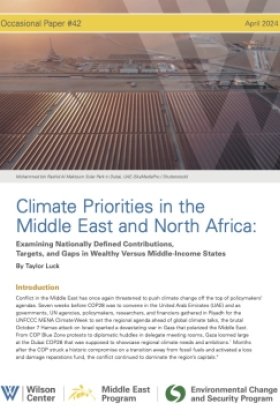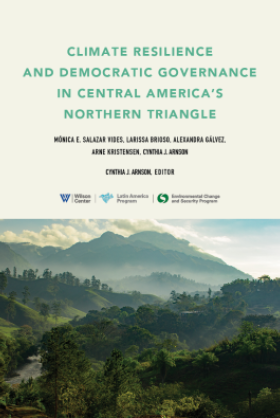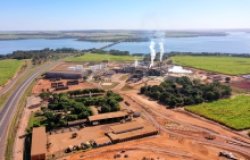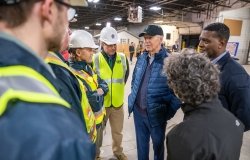Deforestation, Population, and Development in a Warming World: A Roundtable on Latin America
Panelists Liza Grandia, assistant professor of international development and social change at Clark University, and Jason Bremner, director of population, health, and environment at the Population Reference Bureau, argued that meeting the needs of Latin America's rural communities is therefore key to conserving Latin America's forests.
Overview
"Rural development and MCH [maternal child health] in the most remote, rural areas are going to largely explain the future of Latin American conservation, development, population, and urbanization," said David Lopez-Carr, associate professor of geography at the University of California, Santa Barbara."
Nearly 80 percent of Latin America's people live in urban areas, yet the continent's rural populations have a disproportionate effect on its forests. Panelists Liza Grandia, assistant professor of international development and social change at Clark University, and Jason Bremner, director of population, health, and environment at the Population Reference Bureau, argued that meeting the needs of these communities is therefore key to conserving Latin America's forests.
Rural Populations Have Disproportionate Impact on Deforestation
"There are two Latin Americas," said Carr. Countries like Argentina, Chile, and Uruguay are 90 percent urban, while countries like Guatemala, Ecuador, and Bolivia are about 50 percent urban. However, despite this rapid urbanization and declining population growth at the national level, rural areas in Latin America are still experiencing high fertility rates and significant forest loss. So how are these trends related?
In his analysis of more than 16,000 municipalities in Latin America, Carr found "no statistical significance between population change at the municipal level and woody vegetation change at the municipal level." Yet this lack of connection does not mean population growth and deforestation are unrelated, but instead indicates "a problem of place and scale," he said. Within countries or even within municipalities, there are huge variations in fertility rates. Rural areas, which generally have larger families, more agricultural expansion, higher population growth, and lower population density, account for higher impact per capita on forests.
"Less than one percent of the population of Guatemala moves to any rural frontier at all," said Carr, "yet that small, tiny fraction of the population has a disproportionate impact on the forests, and that is true throughout Latin America." Carr also distinguished between the private sector primarily converting secondary forest for corporate agriculture and subsistence farmers clearing old growth forest.
Indigenous Lands Are Key to the Future
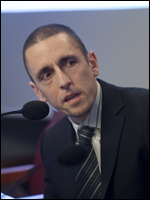 There are generally two groups of people on the frontier: indigenous people and "colonists," who move in to take advantage of undeveloped land. Indigenous people, by and large, act as "stewards of the forests," exhibiting lower rates of deforestation and forest fragmentation then colonists, Bremner said. "They do have a very protective effect, largely because they are excluding others from those lands."
There are generally two groups of people on the frontier: indigenous people and "colonists," who move in to take advantage of undeveloped land. Indigenous people, by and large, act as "stewards of the forests," exhibiting lower rates of deforestation and forest fragmentation then colonists, Bremner said. "They do have a very protective effect, largely because they are excluding others from those lands."
Indigenous communities tend to be "common property institutions" with an informal or cultural set of rules and traditions facilitating land use, said Bremner. They are "really good at mobilizing against external threats," he said, which results in a protective effect over the forest. In the Amazon, for example, "indigenous lands, in the context of all of this colonization and deforestation that is happening, are now seen as key to the future," he said.
However, as indigenous population growth and growing agricultural and industrial expansion change indigenous communities and livelihoods, more formal rules must be developed to govern land use. If indigenous communities "are the protective factor, then we need to know how to protect them," said Bremner.
There are few demographic surveys of rural communities, but one of nearly 700 women in the Ecuadorian Amazon found the total fertility rate of indigenous women to be 7-8 children per woman. "Fifty percent of indigenous women didn't want to have another child…of that 50 percent, 98 percent were not using a modern method of contraception," Bremner said. "Responding to these women's needs, I think, would go a long way in terms of changing the future of these communities."
Guatemala: Reducing Fertility By Thinking Outside the Box
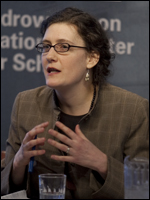 Grandia, with support from Conservation International and ProPeten, conducted a study of population and environment connections as part of the Demographic and Health Survey (DHS) of Peten, a sparsely populated and highly biodiverse municipality of Guatemala. The 90,000 people living in the protected area in this park had "literally no family planning services," said Grandia, and their population was on track to double within 20 years.
Grandia, with support from Conservation International and ProPeten, conducted a study of population and environment connections as part of the Demographic and Health Survey (DHS) of Peten, a sparsely populated and highly biodiverse municipality of Guatemala. The 90,000 people living in the protected area in this park had "literally no family planning services," said Grandia, and their population was on track to double within 20 years.
Using the DHS data, Grandia and ProPeten created a "somewhat eclectic population and environment program" that integrated many of the concerns of indigenous Maya communities in Peten, called Remedios. Remedios focused on a diverse set of issues, including agriculture, education, maternal and child health, family planning, and gender issues, and included projects like a "traveling education-mobile" and Between Two Roads, a bilingual radio soap opera in Spanish and Q'eqchi' Maya, which used the story of a conflict between midwife and cattle rancher in a frontier community "to touch on a whole range of social and environmental issues."
"As a result of our efforts…the total fertility rate dropped from 6.8 in 1999 to 5.8 in 2002, and in the most recent DHS it had fallen to 4.3," said Grandia. She credited this success in part to the fact that the programs were "so cross-cutting across many of those schools of thought." Yet the integration of a diverse range of issues also caused a split between the field-based ProPeten and the DC-based Conservation International, who wanted a more "narrow focus" on family planning and conservation, she said.
"Sometimes working outside the box can have unexpected results," said Grandia. The population-environment movement could learn from the American environmentalist movement's evolution from "an elite movement" into a "broader-based socially dynamic movement that involved new constituencies," she said.
"Population and environment has often begged the articulation of a third field," said Grandia. "How you fill in that blank often reflects the kind of development interventions you deem appropriate." Perhaps "justice" should be considered "a new critical third paradigm," she said.
Drafted by Hannah Marqusee and edited by Schuyler Null and Meaghan Parker
Geoff Dabelko, Environmental Change & Security Program, 202-691-4178
Documents & Downloads
- Deforestation, Population, and Development in a Warming World: A Roundtable on Latin AmericaDownload
- Deforestation, Population, and Development in a Warming World: A Roundtable on Latin AmericaDownload
- Deforestation, Population, and Development in a Warming World: A Roundtable on Latin AmericaDownload
- Deforestation, Population, and Development in a Warming World: A Roundtable on Latin AmericaDownload
- Deforestation, Population, and Development in a Warming World: A Roundtable on Latin AmericaDownload
Speakers
Hosted By

Environmental Change and Security Program
The Environmental Change and Security Program (ECSP) explores the connections between environmental change, health, and population dynamics and their links to conflict, human insecurity, and foreign policy. Read more

Brazil Institute
The Brazil Institute—the only country-specific policy institution focused on Brazil in Washington—works to foster understanding of Brazil’s complex reality and to support more consequential relations between Brazilian and US institutions in all sectors. The Brazil Institute plays this role by producing independent research and programs that bridge the gap between scholarship and policy, and by serving as a crossroads for leading policymakers, scholars and private sector representatives who are committed to addressing Brazil’s challenges and opportunities. Read more

Latin America Program
The Wilson Center’s prestigious Latin America Program provides non-partisan expertise to a broad community of decision makers in the United States and Latin America on critical policy issues facing the Hemisphere. The Program provides insightful and actionable research for policymakers, private sector leaders, journalists, and public intellectuals in the United States and Latin America. To bridge the gap between scholarship and policy action, it fosters new inquiry, sponsors high-level public and private meetings among multiple stakeholders, and explores policy options to improve outcomes for citizens throughout the Americas. Drawing on the Wilson Center’s strength as the nation’s key non-partisan policy forum, the Program serves as a trusted source of analysis and a vital point of contact between the worlds of scholarship and action. Read more

Mexico Institute
The Mexico Institute seeks to improve understanding, communication, and cooperation between Mexico and the United States by promoting original research, encouraging public discussion, and proposing policy options for enhancing the bilateral relationship. A binational Advisory Board, chaired by Luis Téllez and Earl Anthony Wayne, oversees the work of the Mexico Institute. Read more
Thank you for your interest in this event. Please send any feedback or questions to our Events staff.


